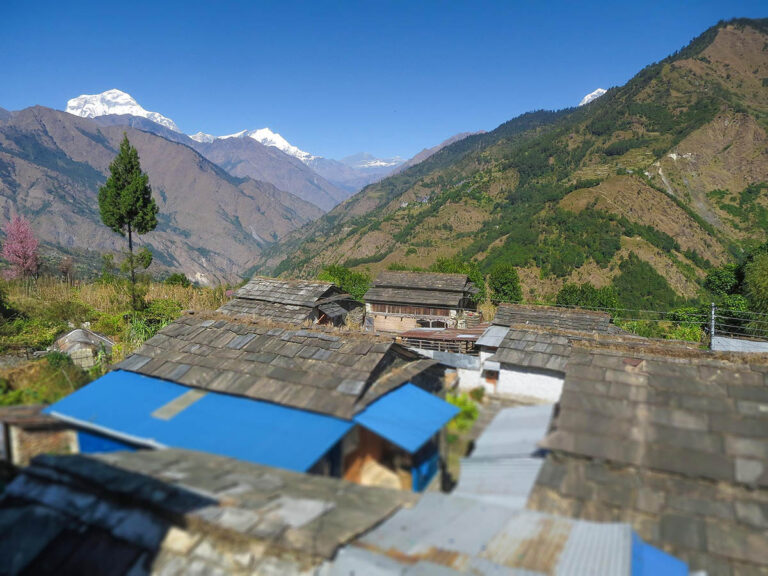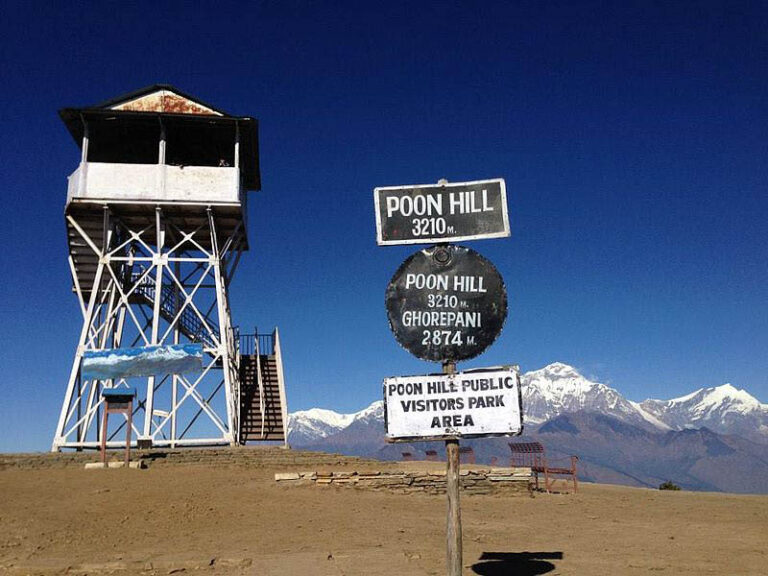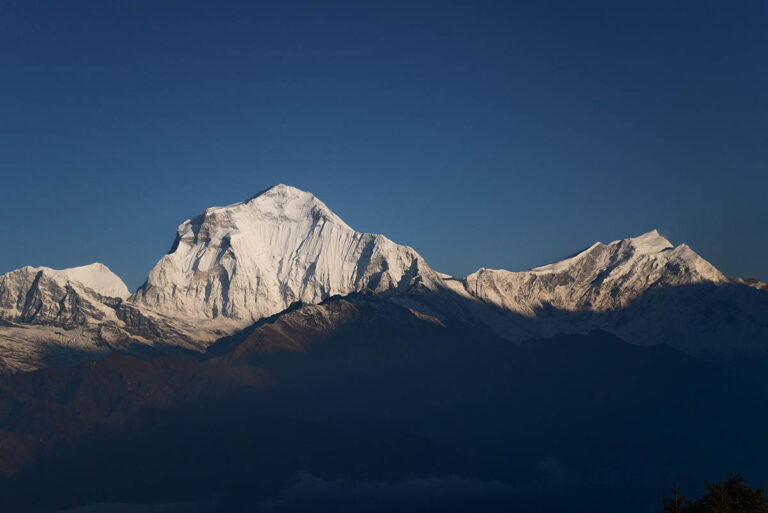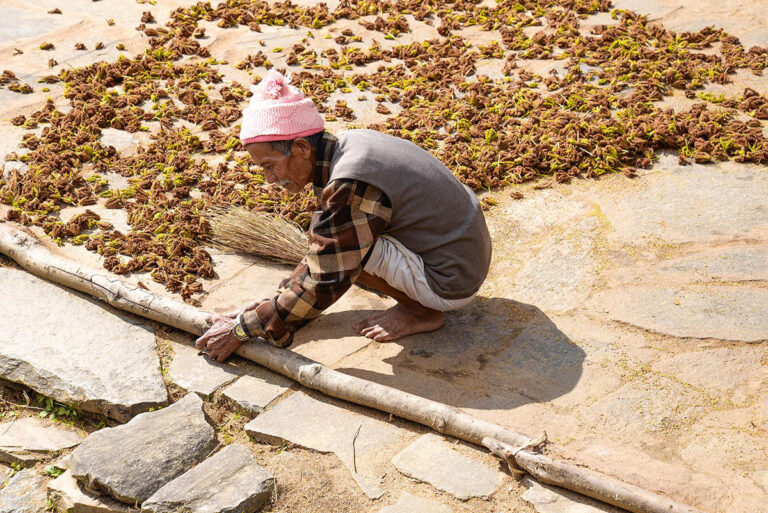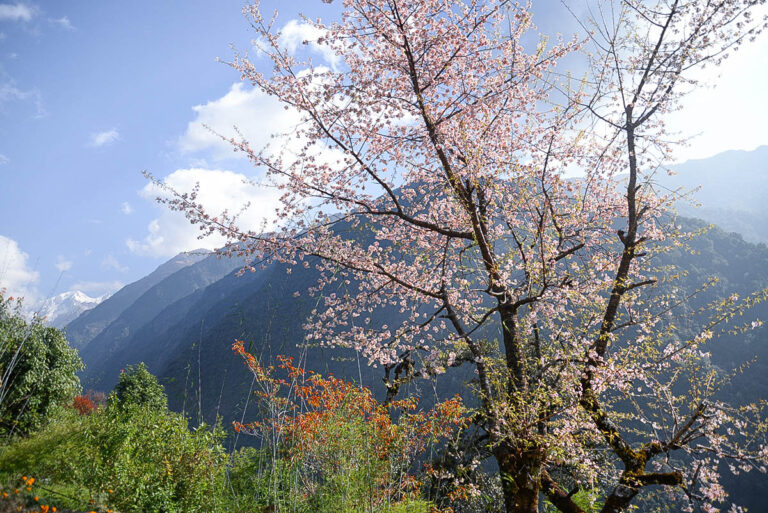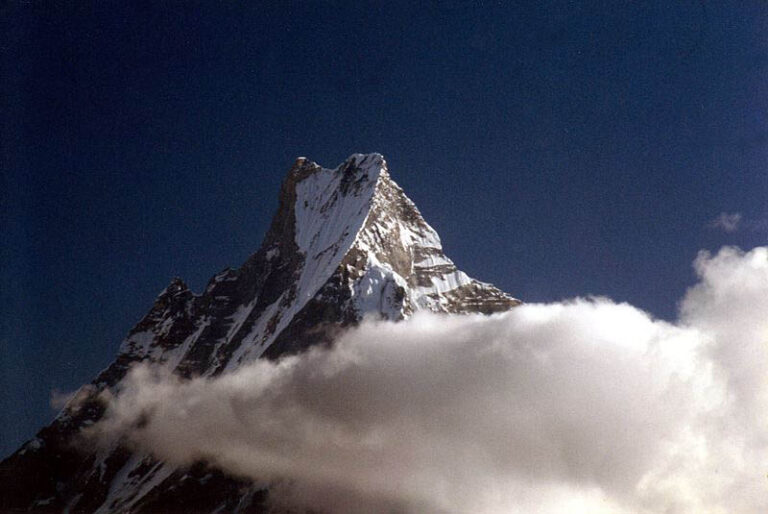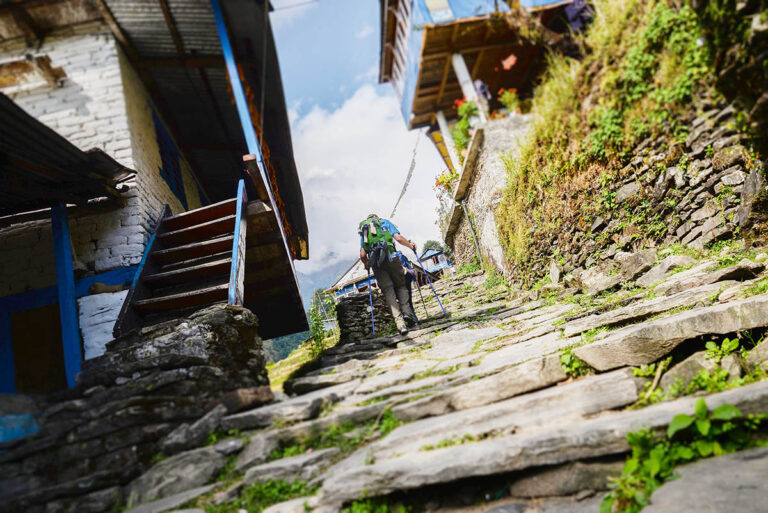Day 01 – pick up and introduction with guide – we will pick you up from the Kathmandu airport on your arrival date then escort to hotel. Your hotel will be located center of the Thamel; which is one of the tourist hubs in the Kathmandu city.
Day 02 – Sightseeing and briefing about trekking route and gears – Sightseeing entire the Kathmandu valley; we will explore some of the world heritage sites as Pashupatinath Hindu temple, Baudhanath Stupa, Durbar square and Swayambhunath which is also known as monkey temple due to moving hundreds of monkeys around the temple compound. After exploration of these historical places; you will return back to hotel and your guide will brief about trekking trip, trekking gears and related topic for your joyful trip.
Day 03 – Drive to Pokhara (810m.a.s.l) – 7 hours drive – Pokhara is 204 kilometers far from the Kathmandu and the tourist bus might takes an approximately 7 hours. During the driving period we will have beautiful view of cultivated land, wide River valley, dozens of villages, which are settled over the vertical land and as well as massif view of Annapurna, Manaslu and Ganesha Himal ranges. In the evening you will hang around beside the Fewa Lake and you will final check your equipment list to start trek by tomorrow morning.
Day 04 – Drive to Nayapul and trek up to Ulleri Village (1960m.a.s.l.) – 4 hours walk – Nayapul is starting point of the Ghorepani Poon Hill Trek which is 42 kilometers far from the Pokhara City so we will drive either public bus or Taxi to get Nayapul which might takes an approximately one and half hours. During the driving period, we can see magnificent view of Mardi Himal, Machhapuchhre Himal, Hiuchuli and south Annapurna from the window. From Nayapul we will walk just bank of the Bhurungdi River pass by Birethanti, Ramghai, Sudame, Hile, Tikhedhunga and four hours walk bring us to Ulleri village. We will ascend gradually to get Tikhedhunga Village with the view of terraced field, waterfalls, green forest and charms view of Bhurungdi River valley. The trail gently ascends from Tikhedhunga to Ulleri Village that may takes an approximately one hour to get Ulleri Village.
Day 05 – Trek to Ghorepani (2860m.a.s.l.) – 5 hours walk – Ulleri Village is located just top of the hill so if the weather is clear then the morning command us to see stunning view of the Annapurna South 7219m, delightful landscape and River valley. After breakfast; we will head towards Ghorepani Village pass by the beautiful hamlets called Banthati, Nangethati and lower Ghorepani. One-hour climb up from Ulleri Village bring us to Banthati Village that offers to see beautiful view of Machhapuchhre, Annapurna South and green landscapes. After Banthati Village, the trail leads us through the forest on the level trail to get small stream where can be seen beautiful waterfalls just two minutes before than a teashop. From the teashop, we will climb up approximately two hours through the dense forest of Rhododendron to get Ghorepani Village. Ghorepani Village is divides into two parts as lower and upper Ghorepani and upper Ghorepani is better than lower Ghorepani regarding by the mountains view.
Day 06 – Hike up to Poon Hill and trek to Tadapani Village (2630m.a.s.l.) – 6 hours walk – Early in the morning, we will hike up to Poon hill viewpoint which might takes about 45 minutes to get top of the hill. The view point commands to see beautiful view of sunrise and panoramic mountains view of Machhapuchhre, Ghandarva Chuli, Gangapurna, Lamjung Himal, Annapurna II, Annapurna III, Annapurna IV, Mardi Himal, Nilgiri, Annapurna south, Hiunchuli, Baraha Shikhar and including three top ten mountains of the world known as Annapurna I 8091m, Dhaulagiri 8167m and Manaslu 8163 meters. After exploration of Poon hill we will return back to guesthouse and head towards Tadapani village. Begin of the trek we will climb up an approximately one hour to get top of the hill which is also a view point and command us to see similar mountains view as from the Ghorepani Poon Hill. From here, the trail leads us through the forest and on the level trail until Deurali Village that may take another 45 minutes. After Deurali Village, we will descend an approximately one hour following by a small stream valley to get Banthati Village that is well known as lunch place of the day. From here we will walk on the flat trail for 20 minutes through the dense forest of Rhododendron then appear a guesthouse in Nangethati Village and the trail gently descend for 20 minutes to the small stream called Murlung Khola. We will cross the Murlung Khola and 35 minutes walk bring us to Tadapani Village, which is our destination for today.
Day 07 – Trek to Ghandruk Village (1940m.a.s.l.) – 4 hours walk – Tadapani Village is surrounding by the forest of Rhododendron and located just top of the hill and offers to see closer view of Annapurna south, Hiuchuli, Machhapuchhre and beautiful sunrise view to the eastern part and dense forest and Bhujung River valley to the southwards. We will head towards Ghandruk village through the Rhododendron forest pass by a small village called Bhaisi Kharka. En route we will have beautiful waterfalls, vista of Machhapuchhre and a small Hindu temple which is built just top of the Ghandruk village. Ghandruk is a beautiful Gurung Village and offers us to see spectacular view of Mardi Himal, Machhapuchhre, Hiuchuli, Mardi Himal, Annapurna South and as well as a museum where can be seen old ornaments, utensils, clothes and other historical things which are used by Gurung people in ancient times.
Day 08– Trek to Nayapul (1070m.a.s.l.) and drive back to Pokhara – 5 hours walk and 2 hours drive – There are many trekking routes to get back from Ghandruk Village that can be customize according to traveler’s time frame. The shortest trekking route is walk down to Nayapul pass by the Kimche, Syauli Bazaar, Birethanti and Nayapool. Along the trekking trail, we will enjoy with the agricultural terraced field, green landscapes, gurgle sound of the Modi River and many small hamlets that settled over the vertical land. Pokhara City is 42 kilometers far from the Nayapool and normally takes an approximately one an half hours to get Pokhara will depend on our transportation.
Day 09 – Drive or fly back to Kathmandu – There are two options to get Kathmandu from Pokhara. If trekkers have enough time then they can drive tourist bus that might takes an approximately 7 hours to get Kathmandu. Normally the tourist buses leave 7:30 AM from the tourist bus park. If trekkers have tight schedule or time frame then they can fly out from Pokhara which may takes 25 minutes to get Pokhara and offers to see massif view of Annapurna, Manaslu, Langtang and Ganesha Himal ranges from the window of plane.
Day 10 – Final departure – After successful trip of Ghorepani poon hill trek you will fly back to your home with great memory and dozens of tales about the jungles, mountains, cultures and experience of Nepal.
